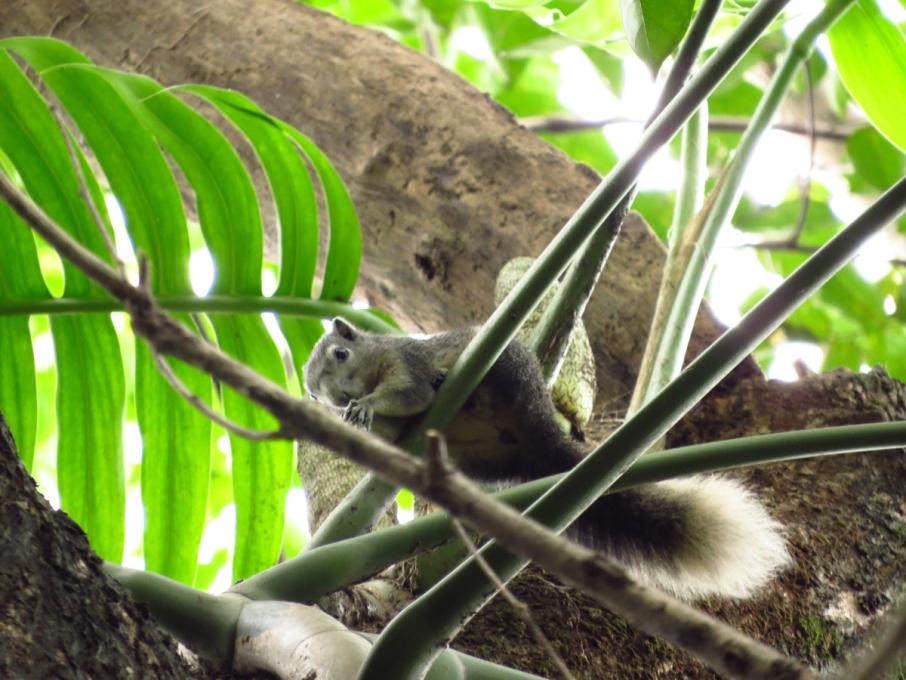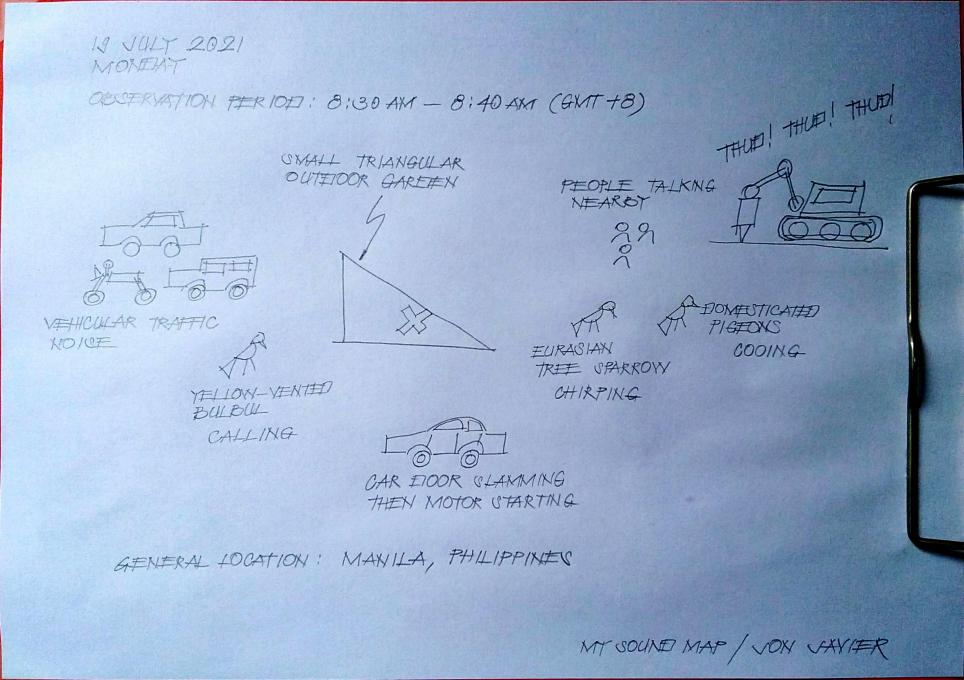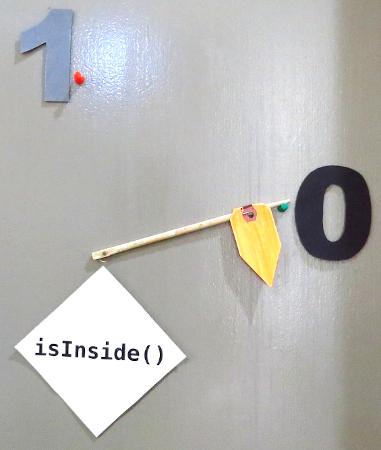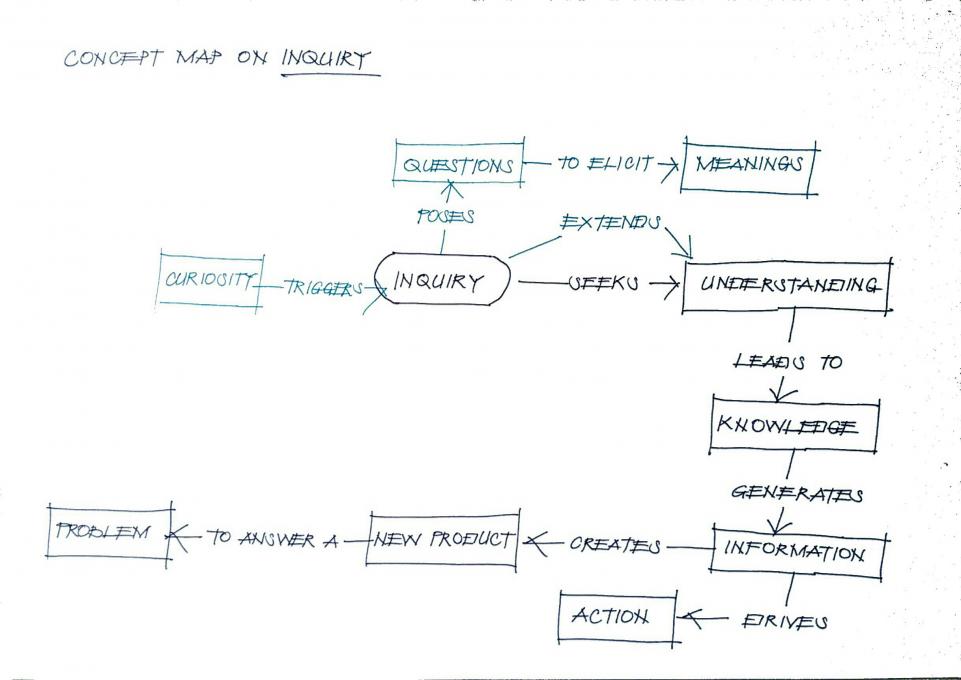Jon Javier
Forum Replies Created
Viewing 12 posts - 1 through 12 (of 12 total)
-
Jon JavierParticipantIt took me many iterations of the process of revising the rubrics that I am using to rate the quality of programming project (or application design and writing) the students produce as endpoint assessment for each quarter. And the rubrics is still evolving (especially during evaluation of the previous school year's activities and experiences in preparation for the next). I share to my students that designing an algorithm and writing it using a chosen programming language is similar to planning and writing an essay: logical organization of statements, grammar, and rhetoric are important. There are times that a student or two would lose focus on the value of using the rubrics to help guide them in the development process by being grade conscious (asking questions like how many points will be deducted if a part of the work goes against an item in the rubrics). Academic integrity in a student's work is non-negotiable. I emphasize that collaboration is encouraged to learn from peers but one's own creative work is expected. I discuss the issue of plagiarism and its many forms and make clear the consequence if one is caught going in the opposite direction of the honor code.
-
Jon JavierParticipantI am an eight-grade computer science teacher wherein our students are taught the fundamentals of computer programming following the model of computational thinking. The closest endpoint assessment (to a natural science' scientific investigation) that my colleagues and I implement at the last academic quarter is a programming design and implementation wherein we ask students to select a subject (and a specific lesson in that subject) from their previous or current grade level where they can demonstrate their developed skills by designing then implementing a small program solving an identified computing problem. Challenge number one is guiding the students to limit the scope of their project to a challenge level that matches their expected computational thinking skills and one that is within the given time-frame. Second challenge is addressing the problem of some students who are short-circuiting the development process (with the thought that by doing so will speed-up finishing the project). Third challenge is on developing consciousness and good attention to details among students through the development of their own test data that they will use to ascertain that the program that they developed will process the test data correctly and produce precise output. Some students will turn-in haphazardly developed software that did not even underwent quality testing / check. To address these identified challenges and help students create quality projects, me and my co-teachers (teaching the same subject) uses checkpoints and/or milestones to monitor the progress of the students along the software development process (which is the scientific method version of solving a computational problem). Being able to identify students who are having difficulty with their work, give timely advice to students who are on-schedule with the project timeline, give prompt feedback to students whose work already have errors (but they themselves are not aware of) so that they can correct immediately in the process the detected problem.
-
Jon JavierParticipantI looked up eBird and GLOBE.gov. Global Learning and Observations to Benefit the Environment (GLOBE) allow an individual to do observations in four science investigation areas (biosphere, hydrosphere, pedosphere, and atmosphere), collect research grade data (through following set protocols) , and contribute to the database. Both projects allow public access to data sets even if the individual has not participated in the project. In eBird one can request access to data sets under Science | Use eBird Data and Tools. However, an individual need to at least create an account to be able to request for one. In GLOBE, one can retrieve a filtered data set(s) through the project's Advanced Data Access Tool (ADAT). No existing account is required to retrieve data sets. With real-world data sets available to the students (and STEM educators), educational training in the science practices will be more meaningful (knowing that the data were collected in the local setting). Moreover, as new data gets added to the data set through continuous participation in the project, the wealth of information that can be produced to answer scientific questions or investigations likewise increases.
-
Jon JavierParticipantUp to the period when lockdown and restrictions were put in place (March 2020) nature walks that I have organized for our students just involves either bird or tree identification accompanied with Did you know ... information about the species identified or observed. There is no post-activity processing done. I could only imagine the interesting outcomes of doing the activities like 'sound map' and 'I wonder ...' or 'I notice ...' to inspire deeper observational and experimental questions. I recall encountering a puzzle inside a vegetated area in our campus wherein I noticed that a cluster of flower litter (Pterospermum celebicum) were under a different tree that is about 20 meters away from the actual tree that produces the flowers.
 Most of the flower litter have a sepal torn off and have punctured marks at the base.
Most of the flower litter have a sepal torn off and have punctured marks at the base.
 I am longing for our return to the face-to-face mode of class and use the learned strategies from this virtual retreat. Alas, the next academic year (which will start on September) will still be done in remote learning mode.
I am longing for our return to the face-to-face mode of class and use the learned strategies from this virtual retreat. Alas, the next academic year (which will start on September) will still be done in remote learning mode. -
Jon JavierParticipantThank you Maria for bringing up the citizen science project. Will explore on Project Squirrel and see the possibility of adapting the protocol of collecting data in the environment and habitat in the school I am teaching (Philippine Science High School - Main, Quezon City, Philippines). The invasive tree squirrel Callosciurus finlaysonii has proliferated in the 17 acre campus ground (actually already a concern in the Metropolitan Area and adjacent provinces). I think this will be a very interesting research to document how the species have adapted in the local habitat, establish the population, and determine its effect on the local wildlife (especially on the population of wild birds in the school).

-
Jon JavierParticipantThe part of the video on "Inspiring Inquiry through Open-ended Questions" in which the subject is on approaches to observations (with the photo of a pigeon drinking water from a spout) reminds me of the insertions (breaker or time-out) that I do in my computer programming classes before the pandemic, wherein to break routine and boredom and spark curiosity among my eight-grade students I would show some photo or video documentations of interesting field observations I had in the campus grounds (a wild bird, a plant, or even invasive Finlayson's squirrel). The brief activity insertion is effective in the sense of just achieving the very limited purpose that I mentioned earlier. The shown photo / video documentation will stir students' curiosity and wonder, but verily short-lived. I never framed the subjects shown to my classes using open-ended questions that will spark authentic learner's curiosity and wonder that will increase the likelihood that they will pursue answering their questions through scientific investigations (that they are learning through their natural science subjects like Integrated Science and Earth Science). Haha. I think I should resume doing these insertions (version 2.0) in the forthcoming second year remote learning setup of ours this September.
-
Jon JavierParticipantIt is a rainy Monday here in Manila, Philippines (19 July 2021). I started the observation at 8:30 AM (GMT +8) in my outdoor garden. Definitely there is already a bias in the activity of observations based on hearing that I made. One, I am already very much familiar of the environment. Two, I already have developed some level of skill doing observations based on heard sound as a birdwatcher. Nevertheless, the activity is still both enjoyable and interesting in a sense that it still stimulates your sense of imagination and creativity based on what you are hearing (with your eyes closed). I can tell the relative distance of the sound source, the bird calls still tests me to associate each to the correct species and imagine their location and in what tree they are perched (based on pre-existing knowledge), and I can say that the most loud and unpleasant is the familiar sound of the vehicular traffic. I have prior experiences conducting nature walks for the students (sometimes for colleagues, and at other times for the public): either through birdwalk or treewalk (the catchy local terms we use to mean birdwatching and tree identification activity respectively). For birdwatching we use our sense of sight and hearing to identify species, but for the treewalk I use most of the senses as applicable to make the activity interesting and spark wonder to the participants. Sight to identify a plant based on leaf shape, flower, fruit, trunk color and texture. Touch to let the students feel the sand-paper like texture of the Ficus ulmofolia's leaf blade (which we call locally as "Is-is" and traditionally used in the remote provinces as a scouring pad to clean the pots or polish a wooden floor). Smell to let the students distinguish tree species based on the scent of its flower (say comparing Cananga odorata from Murraya paniculata, the scent of a crushed leaf or tree sap (say leaf of a Eucalyptus deglupta, Canarium ovatum, Cinnamomum sp. and sap of Canarium asperum). Letting the participants taste an edible fruit if present (say Antidesma pentandum, Dillenia philippinensis, etc.).

-
Jon JavierParticipantI am confident that our students (Philippine Science High School - Main Campus) receive high standard education in STEM and training in the scientific process and practices from K-7 to K-12. What I hope our students to experience is the third key youth practice identified in the research of Ballard, Dixon, and Harris (2017): engagement with complex social-ecological systems. We have the environment for this within the campus and the communities surrounding the school. Getting the students outside the confines of their classroom, to either introduce or let them discover the natural resources we have in the school community and create a spark to stimulate their curiosity and sense of wonder. Nature walks are perfect: bird watching / observation or plant identification. Collaborating with science teachers to elevate students knowledge of the natural environment and use citizen science projects to immerse the students in-depth in the science and engineering practices.
-
Jon JavierParticipantOf the three key educator practices that the UC Davis recommends for teachers to use to engage students in the scientific practices through citizen science the one that I am most likely to use as a model is 'framing the work globally and locally'. I am drawing from my experience when, ten years back to my responsibility as a teacher in Philippine Science High School - Main Campus, I fully realized how lucky the stakeholders are (especially students and teachers) that of the 17 acre lot 60% of that are aggregated green space with wildlife (trees, birds, invertebrates, etc.). Compare these resources that we have to other public high schools (even other science high schools) in the metropolitan area whose available open space if ever they have is but concreted. Basically what we have is a living outdoor laboratory. There is truth in the statement that one cannot protect (or conserve) something that one does not know they have (until realizing it is lost or in the critical state of being lost). Imagine the value of being able to host at least 40 plus species of birds and still counting (resident and migratory). Even if not globally, if I can frame an endeavor that is linked to a citizen science project that is both nationally and locally meaningful then that would really be something to the learners.
-
Jon JavierParticipantIf we define citizen science as the active participation of the general public in the process of observation (a subject either in the natural or material world), collecting and sharing data for utilization by professional scientists, then the citizen science project that I mostly used with our science high school students is eBird. Please note however that I am not a natural science teacher, but a technology teacher teaching the subject 'Introduction to Computational Thinking' to eight-grade students. For this reason I myself is a citizen scientist contributing my observations through projects like eBird, iNaturalist, Habitat Network which I used to map trees in the campus and visually define the local environment of the site (how I miss using the app of this project and looking forward to its return), at times participating in the annual Asian Waterbird Census (AWC) through the Wild Bird Club of the Philippines, and collaborating with a corporate project Energy Development Corporation - BINHI to help conserve premium and endangered native tree species by hosting a number of species in the campus. Even though I have no direct influence to our learners to use a citizen science project in a classroom setting to help immerse the students in the scientific practices, I use my local knowledge of wild birds and trees in the campus grounds to get students outside (for awareness and to share the joy of identifying and observing wild birds and trees). There are times that I get to help and guide Grade 11 or 12 students whose research subject fall into ecology. One such student research is on diversity of avian population in the area (the students' video abstract can be viewed in this link: https://youtu.be/bNXBFXD_eNc).
-
Jon JavierParticipantIn the academic year that just concluded, AY 2020-2021, I taught four eight-grade classes on the fundamentals of computational thinking through computer programming (using C++). In this context the scientific process of designing and validating a proposed solution (which we call as algorithm) then implementation is termed as computational thinking, systems development life cycle, or software development life cycle. But really, no matter what label one uses, it is still the scientific process of solving a problem. One important programming concept we impart to the students is the logical control structure of 'decision' or 'conditional execution' (i.e., how to instruct a machine to select from two or several alternatives based on the result of evaluating a set condition). Before this lesson 1 of the virtual retreat, honestly I have no educational perspective name or label for the teaching strategies we are using to teach a programming concept other than 'coding exercises' (which form part of formative assessments), 'machine problem' (which form part of alternative assessments). Now I have words to use for each level of activities that we employ in our class and what learning we hope to reinforce: the four levels of inquiry (confirmation, structured, guided, open) The challenges of remote learning, where no face-to-face classes are allowed (which is likely to continue until at least December 2021) due to the pandemic, rendered as same subject teachers not being able to implement an activity in the level of open inquiry (wherein in the last quarter of any academic year we ask students to choose a concept from any of their seventh or eight-grade subjects which will be the idea for designing and implementing an algorithm for the small software application that they want to develop.

-
Jon JavierParticipantI followed the instruction in the readings that I begin creating a personal concept map of inquiry prior to reading the different definitions of inquiry (drawings and characters in black). Afterwards, I added keywords from the definitions that I agree with (drawings and characters in blue). The end result of my edited conceptual drawing points to curiosity as a critical success factor to keep learners to keep on asking questions to seek understanding of some interesting observation. This understanding leads to a new knowledge or information directing the learner to take action or to design and implement a solution to the identified problem.
 in reply to: Virtual Educator Retreat: Intro to Inquiry #825243
in reply to: Virtual Educator Retreat: Intro to Inquiry #825243
Viewing 12 posts - 1 through 12 (of 12 total)
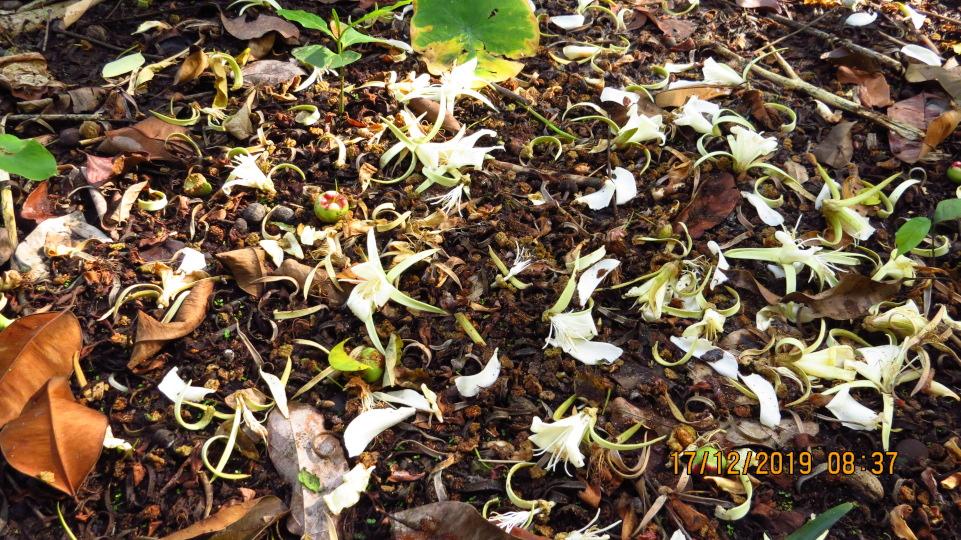 Most of the flower litter have a sepal torn off and have punctured marks at the base.
Most of the flower litter have a sepal torn off and have punctured marks at the base.
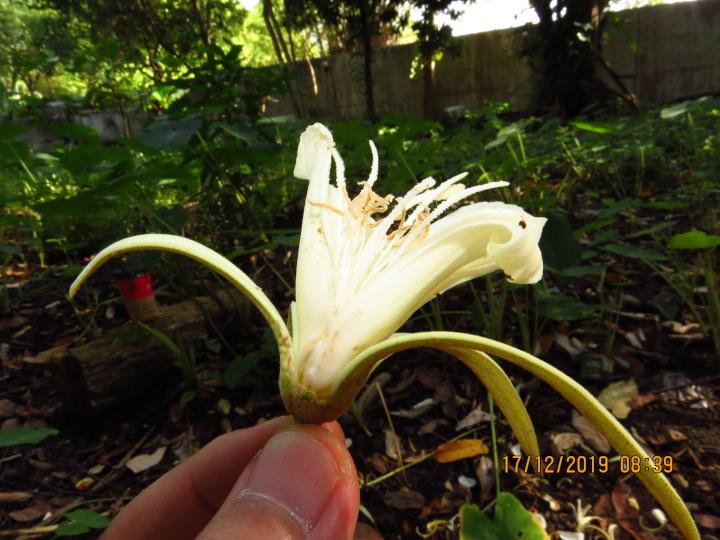 I am longing for our return to the face-to-face mode of class and use the learned strategies from this virtual retreat. Alas, the next academic year (which will start on September) will still be done in remote learning mode.
I am longing for our return to the face-to-face mode of class and use the learned strategies from this virtual retreat. Alas, the next academic year (which will start on September) will still be done in remote learning mode. 